ANJU BOBBY GEORGE
Athlete
Athlete
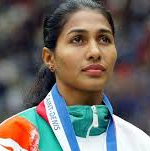 Anju Bobby George, made history when she won the bronze medal in Long Jump at the World Athletics Championships 2003 in Paris. With this achievement, she became the first Indian athlete ever to win a medal in a World Athletics Championship clearing 6.70 m.
Anju Bobby George, made history when she won the bronze medal in Long Jump at the World Athletics Championships 2003 in Paris. With this achievement, she became the first Indian athlete ever to win a medal in a World Athletics Championship clearing 6.70 m. Anju was born on April 19th, 1977 in Cheeranchira Kochuparambil family in Changanasseri, Kerala to parents K.T. Markos and Gracy. She was initiated into athletics by her father and her interest was further kindled by her trainer Mr. Thomas in Koruthode school. She did her schooling in St. Ann's High School and CKM Koruthode School and graduated from Vimala College. In the School Athletic meet in 1991-92, she came first in 100 m hurdles and relay and second in long jump and high jump events and became the women's champion. Anju's talent was noticed in the national schools games where she won third place in 100 m hurdles and 4x100 m relay. She was the Calicut University Champion during her college days.
Although she started with Heptathlon, she later began to concentrate on her jump events and went on to win long jump medal in the 1996 Delhi junior Asian championship. In 1999 Anju set the national record for triple jump in the Bangalore Federation Cup and Silver medal at the South Asian Federation Games in Nepal. In 2001 Anju bettered her own record in long jump to 6.74 m, her best till date in the National Circuit Meet at Thiruvananthapuram. In the same year she also won gold for triple jump and long jump in the Ludhiana National games. Anju reigned supreme in her events in the Hyderabad National games also. Anju became the first Indian woman to win a bronze medal clearing 6.49 m at the Commonwealth Games at Manchester 2002. She also won the gold medal at the Busan Asian Games. She received the prestigious Arjuna ward (2003) for eminent sports persons from the government of India after her success in the World Athletic meet.
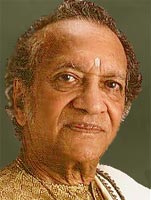 all over the world. and incomparable Sitarist, Pandit Ravi Shankar enjoys great popularity
all over the world. and incomparable Sitarist, Pandit Ravi Shankar enjoys great popularity 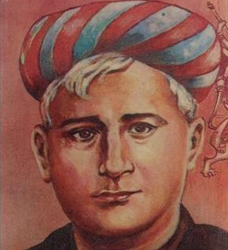 Bankin C. Chaterjee was the composer of the National song 'Vande Mataram'. He was considered to be a leading litterateur of Bengali literature. He was born in 1838 at Kantal-para, West Bengal.
Bankin C. Chaterjee was the composer of the National song 'Vande Mataram'. He was considered to be a leading litterateur of Bengali literature. He was born in 1838 at Kantal-para, West Bengal. 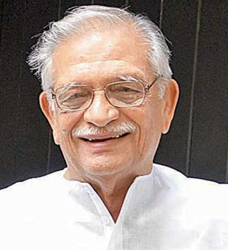 Gulzar is a multifaceted personality; a
Gulzar is a multifaceted personality; a 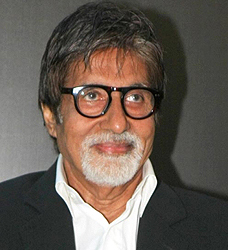 Before joining
Before joining 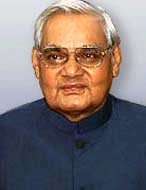 parents Krishna Bihari Vajpayee, a school teacher and Krishna Devi. He was educated at Victoria alias Laxmibai College, Gwalior and D.A.V. College,
parents Krishna Bihari Vajpayee, a school teacher and Krishna Devi. He was educated at Victoria alias Laxmibai College, Gwalior and D.A.V. College, 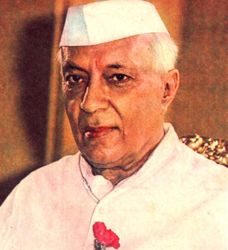 Nehru was born in Allahabad (UP). His father Motilal Nehru was a famous Lawyer and a great Patriot. Nehru was educated in England. As an architect of modern India and a doughty champion of world peace, Jawaharlal Nehru is immortalized in history. Nehru came to be respected as a world statesman for his policies of peace, secularism and non- interference in any country's internal affairs.
Nehru was born in Allahabad (UP). His father Motilal Nehru was a famous Lawyer and a great Patriot. Nehru was educated in England. As an architect of modern India and a doughty champion of world peace, Jawaharlal Nehru is immortalized in history. Nehru came to be respected as a world statesman for his policies of peace, secularism and non- interference in any country's internal affairs. 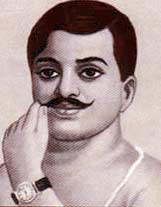 Chandra Shekhar Azad was a revolutionary freedom fighter. He will always remain immortal in the annals of history as a man who sacrificed his life on the altar of freedom. Azad was born at a place called Jhalra in Madhya Pradesh.
Chandra Shekhar Azad was a revolutionary freedom fighter. He will always remain immortal in the annals of history as a man who sacrificed his life on the altar of freedom. Azad was born at a place called Jhalra in Madhya Pradesh. 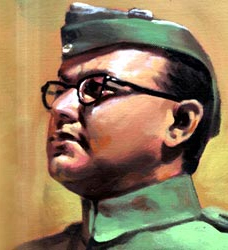 Indian freedom struggle, Subash strongly believed that an armed rebellion was necessary to wrest independence from the British. Subash Chandra Bose is popularly known as 'Netaji'.
Indian freedom struggle, Subash strongly believed that an armed rebellion was necessary to wrest independence from the British. Subash Chandra Bose is popularly known as 'Netaji'. 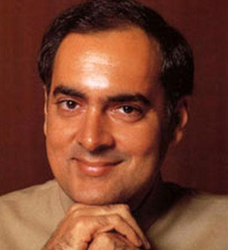 Rajiv Gandhi was born on August 20, 1944 in Mumbai. Born to parents, Firoz Gandhi and Priyadarshini Gandhi, he was heir to the
Rajiv Gandhi was born on August 20, 1944 in Mumbai. Born to parents, Firoz Gandhi and Priyadarshini Gandhi, he was heir to the 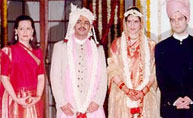 Rajiv Gandhi was the youngest Prime Minister of the World's largest Democracy. He strengthened India's political, economic and cultural bonds with other countries. He was the first
Rajiv Gandhi was the youngest Prime Minister of the World's largest Democracy. He strengthened India's political, economic and cultural bonds with other countries. He was the first 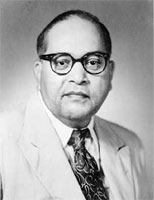 and Ph.D. in 1916. From 1918 to 1920, he worked as a Professor of Law. Dr. Ambedkar set up his legal practice at the Mumbai High Court.
and Ph.D. in 1916. From 1918 to 1920, he worked as a Professor of Law. Dr. Ambedkar set up his legal practice at the Mumbai High Court. 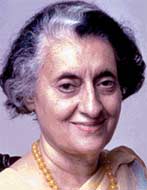 only child of
only child of 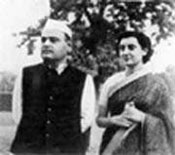 defeat in 1977 elections. Indira Gandhi returned to power in 1980 with an overwhelming majority.
defeat in 1977 elections. Indira Gandhi returned to power in 1980 with an overwhelming majority. (now in Pakistan) to parents Chandrasekhara Subrahmanya Ayyaa civil servant and Sita Balakrishnan. Being the nephew of the great,
(now in Pakistan) to parents Chandrasekhara Subrahmanya Ayyaa civil servant and Sita Balakrishnan. Being the nephew of the great, 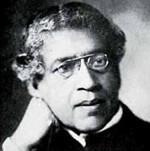 to demonstrate the similarity of responses to stimulation among the living and the nonliving as well as the fundamental similarity of responses in plant and animal tissues. The British Government knighted him in 1917. He founded the 'Bose Research Institute' in Kolkatta in 1917.
to demonstrate the similarity of responses to stimulation among the living and the nonliving as well as the fundamental similarity of responses in plant and animal tissues. The British Government knighted him in 1917. He founded the 'Bose Research Institute' in Kolkatta in 1917.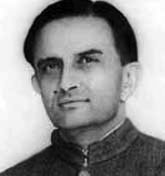 satellite, Aryabhata in 1975. He was born in
satellite, Aryabhata in 1975. He was born in 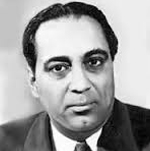 'Father of Indian Nuclear Science'.
'Father of Indian Nuclear Science'. 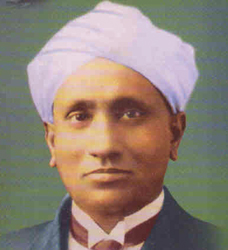 the British Government in 1929. He was also conferred the highest title of 'Bharat Ratna' in 1954.
the British Government in 1929. He was also conferred the highest title of 'Bharat Ratna' in 1954. 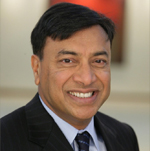
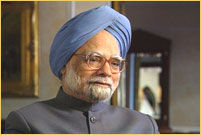 Manmohan Singh, best known as ' father of
Manmohan Singh, best known as ' father of  Dhirajlal Hirachand Ambani, one of the leading Indian businessmen, was born on December 28, 1932 in Chorwad, Gujarat. Popularly known as Dhirubhai Ambani, he heads The Reliance
Dhirajlal Hirachand Ambani, one of the leading Indian businessmen, was born on December 28, 1932 in Chorwad, Gujarat. Popularly known as Dhirubhai Ambani, he heads The Reliance
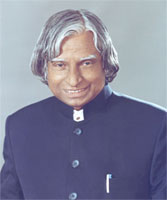 Dr. Avul Pakir Jainulabhudin Abdul Kalam, the twelfth President of India, is rightfully termed as the father of India's missile technology. He was born to parents Jainulabdeen Marakayar and Ashiamma on 15th October, 1931, at Dhanushkodi in Rameshwaram district, Tamil Nadu. Dr. Kalam as an eminent Aeronautical Engineer, contributed for the development of India’s first Satellite launch vehicle SLV-3 and the missiles like the Trishul, Agni, Pritvi etc.
Dr. Avul Pakir Jainulabhudin Abdul Kalam, the twelfth President of India, is rightfully termed as the father of India's missile technology. He was born to parents Jainulabdeen Marakayar and Ashiamma on 15th October, 1931, at Dhanushkodi in Rameshwaram district, Tamil Nadu. Dr. Kalam as an eminent Aeronautical Engineer, contributed for the development of India’s first Satellite launch vehicle SLV-3 and the missiles like the Trishul, Agni, Pritvi etc.